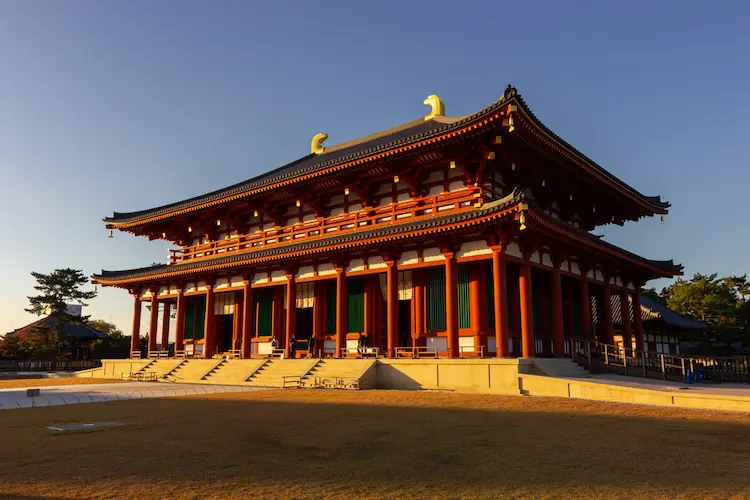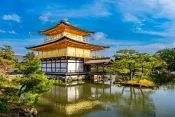Discover the Spiritual Splendor of Kofukuji Temple: A Hidden Gem in Nara, Japan
Nara, a city steeped in history, is renowned for its ancient temples and rich cultural heritage. Among these historic landmarks, Kofukuji Temple stands out as a beacon of spiritual significance and architectural beauty. With a legacy spanning over 1,300 years, this temple offers visitors a unique opportunity to connect with Japan’s profound religious and cultural history. This article will guide you through the wonders of Kofukuji Temple, a site that truly deserves a place on your travel itinerary.
A Journey Through Time
Founded in 710 AD by the influential Fujiwara clan, Kofukuji Temple has played a pivotal role in Japanese history. It was originally built as a family temple to pray for the prosperity of the Fujiwara family, who were one of the most powerful aristocratic families during the Nara and Heian periods. Throughout its long history, Kofukuji has seen numerous reconstructions and restorations due to wars and natural disasters, yet it remains a testament to the resilience and dedication of those who preserved it. In 1998, Kofukuji was designated as a UNESCO World Heritage Site, recognizing its extraordinary cultural and historical value.
Architectural Highlights of Kofukuji

The temple complex is home to several remarkable structures, each with its own unique story and significance. The Five-story Pagoda, standing at 50 meters, is one of the tallest and most elegant pagodas in Japan. Its slender, graceful form has become a symbol of Nara and is a perfect blend of Japanese and Chinese architectural styles. The pagoda serves as a spiritual guidepost, representing the five elements of the universe—earth, water, fire, wind, and sky—and the pathway to enlightenment.

The Central Golden Hall (Chukondo), which was reconstructed in 2018, houses a stunning array of Buddhist statues, including the Yakushi Nyorai (Medicine Buddha) and the Four Heavenly Kings. The hall’s grand interior, adorned with intricate carvings and vibrant colors, creates an atmosphere of reverence and serenity, inviting visitors to contemplate the teachings of Buddhism.
Art and Cultural Treasures of Kofukuji
Kofukuji is renowned for its exceptional collection of cultural treasures, many of which are designated as National Treasures of Japan. The most famous of these is the Ashura statue, a captivating representation of the ancient Buddhist deity with three faces and six arms. This statue, with its serene expression and intricate details, is a masterpiece of Nara Period art and attracts visitors from around the world.
Adjacent to the temple is the Nara National Museum, which houses many of Kofukuji’s most precious artifacts and artworks. Here, you can explore a wealth of historical and religious artifacts, including ancient scrolls, sculptures, and ceremonial items that provide insight into the spiritual and artistic achievements of early Japan.
Visiting Kofukuji Temple
Kofukuji Temple is conveniently located in the heart of Nara, making it easily accessible from major cities like Kyoto and Osaka. From Nara Station, it’s just a 15-minute walk to the temple grounds. For those traveling from Kyoto, the journey takes about an hour, offering a perfect day-trip opportunity.
The best times to visit Kofukuji are during the cherry blossom season in spring and the vibrant autumn foliage in fall. These seasons transform the temple grounds into a breathtaking landscape, with delicate pink blossoms or fiery red leaves framing the ancient structures. While in the area, you can also explore nearby attractions such as Nara Park, home to friendly deer that roam freely, and the majestic Todai-ji Temple, which houses the Great Buddha of Nara.
Tips for an Enriching Experience
To make the most of your visit to Kofukuji, consider joining a guided tour. Knowledgeable guides can provide fascinating insights into the temple’s history, architecture, and cultural significance that you might otherwise overlook. Take your time to explore the temple grounds, allowing yourself to be immersed in the tranquil ambiance and spiritual energy of this sacred place.
Remember to be respectful during your visit. Avoid speaking loudly, and refrain from taking flash photography inside the temple halls. By following these simple guidelines, you can ensure that your experience is both meaningful and respectful to this important cultural site.
Conclusion
Kofukuji Temple is not just a historical monument; it is a living testament to Japan’s rich spiritual and artistic heritage. Visiting this iconic temple is a journey through time, offering a glimpse into the profound traditions that have shaped Japanese culture for centuries. Whether you are a history enthusiast, an art lover, or simply seeking a peaceful retreat, Kofukuji Temple promises an unforgettable experience. Don’t miss the chance to include this hidden gem in your Nara travel plans.








